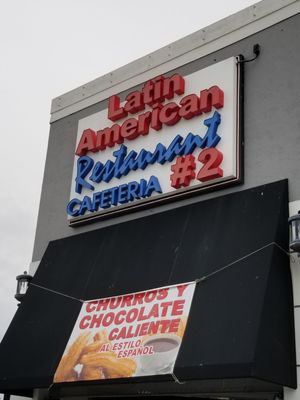About Luis Galindo's Latin American 2 and reviews
Reviews:
anthonyj297
I love this place. Whether I am sitting down for breakfast, lunch or dinner or stopping by for a quick empanada and cafe Leche. I have had many different menu items here and have never been disappointed. This is my go to Cuban spot in...
Richard A
This restaurant located on coral way and SW 107th avenue has a varied menu, I'm a plant strong person but everyone else family and friends are not. So when we go out for lunch or dinner its a democracy and I'm a minority. That said...
mtrv426
I ordered food from here thinking it was the one on 57 ave. Even tho I found out at the end it was this location I went with it anyway thinking it would be the same. I was wrong. The place was busy but not...
joshanemy
Ordered a media noche and a cuban sandwich,originally a real sandwich would include ham, pork, swiss cheese. I received a ham and cheese sandwich, the small thin piece of pork on both sandwiches were tasteless, and dry, The other Luis Galindo restaurant on sw 57...
HenryJimenez
You can not fail to enjoy from the cut, typical Cuban coffee, "old clothes" (beef debris), the popular "arroz con grí" (rice with black beans), to the irreplaceable caramel custard. It is a delight to experience every visit to this classic restaurant in the city...
Sergio R
The place is not sophisticated in decor nor fancy, but the food is consistently good. There are several of these in Miami, but we keep coming here every week because it is close to home and the service and food are awesome. The price is...
lalocadr19
I love this place amazing smoothie. Restaurants has delicious Cuban food Moro rice with pork. They also have delicious sandwich to enjoy.
thebusinessman34
Just entering back into this restaurant after at least 6 years away was nostalgic. Even with the updated facade and modernized tables and chairs. The real cuban feel from years past was present. We got the classics, media noche/ desayuno cubano, cafe con leche/ pastelitos/...
HectorFL
They have a great selection of traditional Cuban dishes and soup. Their ajiaco is superb, as well as their tamal en cazuela. Their masas de Puerco was just OK, sort of bland, more seasoning would have helped. The service was great all thru the meal.
mikesd66
I landed in Ft Lauderdale Airport and headed straight to Miami. We stopped by this laton american restaurant. Food was good. Service is okay. I think they are open 24/7.
Luis Galindo's
Latin American
Restaurant #2



